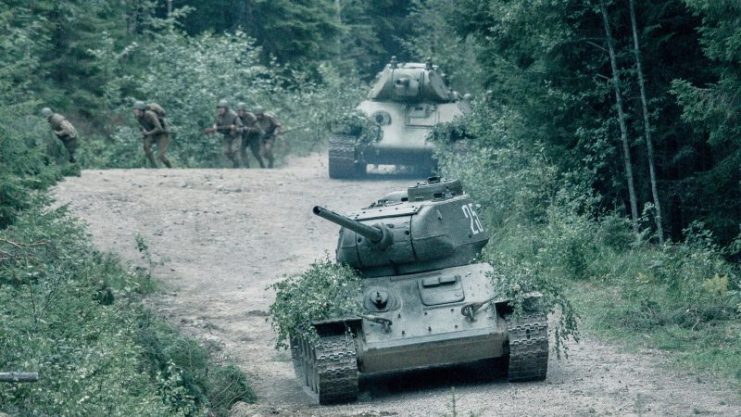Like many history buffs, I love it when films bring military history to life. Of course, I prefer they do it in a believable way and with the support of an intriguing story such as Saving Private Ryan or Platoon.
Good war films can help supply the dramatics and realism of war to those of us who are already submersed in military history, but they also bring in a new generation of history lovers. In my case, films convinced me to read about events after viewing films like The Longest Day, A Bridge Too Far, and Stalag 17.
World War II films are perhaps the most popular and lauded of all war films and for good reason. Many non-English speaking countries have contributed significantly to the genre, but often get overlooked by even the stoutest of military history geeks.
Here are seven World War II films from various countries in no particular order that are worth your time to see if you haven’t already. I have narrowed the field to include only films with regular units; therefore, no partisan, resistance, or commando style films. Also, all these films are available with English subtitles.
Stalingrad
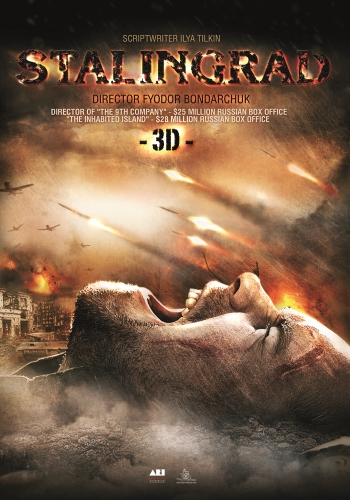
German – 1993
This is the second German offering on the battle of Stalingrad and has persevered a few decades to cement itself on my list.
The “Dogs, do you want to live forever?” line, the familiar “Russian shoemaker boy” that has made its way into several war films, and many other stories appear here.
The film follows a veteran German platoon sent to the Eastern Front as the Axis forces push towards the southern USSR and the Caucasus. It opens with the unit on R&R in Italy following service in North Africa.
Many of the battle scenes are a bit unrealistic and German units clearly don’t follow their own tactical models. However, the viciousness of battle is captured well enough.
Of course, it has its fair share of the “evil, stupid commander” tropes. Interestingly, it paints the typical German soldier in a generally humane fashion, but gives a realistic sense of the good and evil in all men.
Stalingrad is a bit on the sentimental side and certainly an anti-war film at its heart and in its message. Despite some over-dramatization it gives a decent portrayal of the epic battle.
Brest Fortress
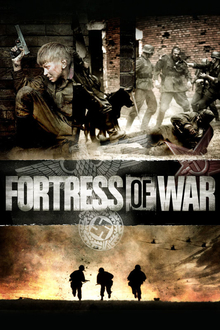
Belorussian/Russian – 2010
This is an intense film based on actual events of the defense of the Brest Fortress at the beginning of Operation Barbarossa in June of 1941. The defenders depicted were involved from the very beginning of Germany’s invasion of the Soviet Union.
The film is narrated from the viewpoint of 15 year-old Alexander “Sasha” Akimov whose parents died during the Spanish Civil War and who now serves as a musician with his brother in the Red Army in Brest.
The battle for the fortress was historically piecemeal with many different groups forming the resistance, and limited communications between them. The film does a great job in focusing on the defense of the fortress in various areas around the complex.
Nine thousand soldiers and 300 families were inside the fortress at the beginning of Barbarossa and were ill prepared for an invasion. The destruction of equipment and supplies by German artillery and air raids only added to their predicament.
It is one of the most heroic defenses by the Soviets in the early war with most German reports listing the defenders as holding out until June 29. Other reports have defenders as still being active in July.
The defenders of the fortress accounted for 5% of all German casualties in June of 1941, which admittedly weren’t significant, but the outnumbered and outgunned men and women give the Wehrmacht a good punch in the nose.
Following the fall of the fortress and subsequent surrender, all Jews and political officers (commissars) were executed immediately by the German army.
Brest Fortress has great action sequences with a good deal of realism and a fantastic pace that will satisfy nearly every fan of World War II history. It is a nice visual on a theater of the war that is mostly untouched by Western film studios.
Unknown Soldier
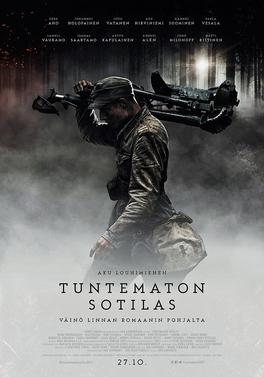
Unknown Soldier does not sugar-coat the grind of this kind of warfare
Finland – 2017
This is the most recent addition to a host of films done about the Winter War and the subsequent “Continuation War” (Finland’s name for their involvement in WWII) with the Soviet Union from a Finnish perspective.
https://youtu.be/rPOi0bQ4Fxk
It is probably the best of them as well. It is the most expensive Finnish film ever at 7 million euros.
The film centers on a Finnish machine gun company during the “Continuation War” that fights against the Soviets along with their German allies.
The unit moves in the attack into Karelia in June of 1941 as part of Operation Barbarossa. The Finns planned to reclaim territory lost to the Soviet Union during the Winter War of 1939-40.
The film is very honest about Finland’s role in the war: its alliance with Germany, aggressions, etc.
It was extremely successful in Finland and some other European countries but failed to get wide release in the UK and US. The original version is over 3 hours and packed with great action sequences.
One specific thing to note is that Unknown Soldier holds the Guinness World Record for the most explosives in one film take (over 70 kg of TNT).
Days of Glory
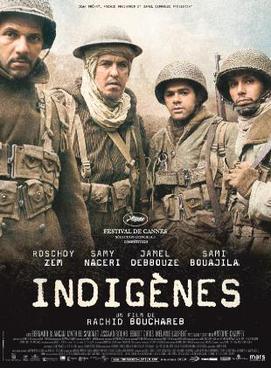
Morocco – 2006
Nominated for an Oscar for Best Foreign Film, Days of Glory takes us a journey with African soldiers fighting for the Free French and centers on a half dozen lead characters with various backgrounds within France’s colonies.
The unit participates in actions in Italy, including their use as “cannon fodder” by the Allied leadership. It shows the bonding that combat creates amongst the group and the adversity they faced outside of combat, such as racism.
The men go on to participate in Operation Dragoon – the second invasion of France by the Allies – and participate in the liberation of several cities and towns in southern France.
The characters are likable and their development and tragedies are striking, making the movie a necessary addition to the list despite some of the combat sequences that are flawed.
Topics of religion, racism, pay, promotion, and pensions are central to the film. Often forgotten is the miniscule size of the Free French Army at 50,000 men until the enlistment of Africans. Afterwards, the numbers surged to half a million.
The film helped bring pension issues for colonial soldiers to light and public uproar helped in motivating the government to address the issue.
Battle for Sevastopol
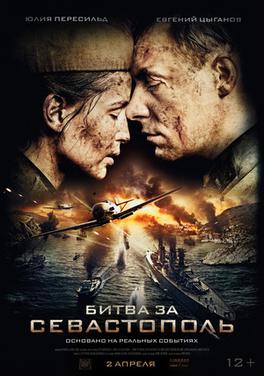
2015 – Russian
Based on real events, Sevastopol was a huge success in Russia, Ukraine, and other countries with Russian speaking audiences.
The main character is Lyudmilla Pavlichenko, and the movie follows her actions during the Great Patriotic War (Soviet name for World War II). Pavlichenko is one of the most accomplished snipers in history – male or female – with over 300 confirmed kills.
The film is narrated from the point of view of former First Lady Eleanor Roosevelt, who befriended Pavlichenko during the latter’s tour of the United States in the middle of the war.
It has good action sequences and features a well-paced story that follows Pavlichenko from the start as a Ukrainian student, to her enlistment into the army, and finally to the battles at Odessa and Sevastopol.
After escaping Crimea, she is sent to the U.S. to garner the support of the American people for the war effort, where she does a series of press conferences and meets several influential people.
During her U.S. tour, Pavlichenko’s gives her now famous quote in the film – “Don’t you think, gentlemen, that you have been hiding behind my back for too long?”
Das Boot
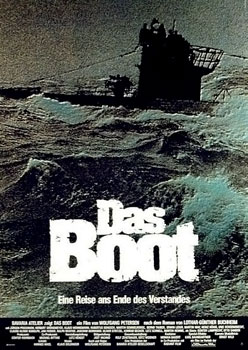
German – 1981
Das Boot (The Boat) is considered one of the best war films ever and certainly one of the best World War II films by critics and audiences throughout the world. It is the first foreign film that I ever watched as a youth and has likely been viewed by the vast majority of War History Online readers already.
The film has an admirable level of detail and an actual U-boat commander and 1st officer served as consultants when it was made. Authenticity was paramount and it is one of Germany’s most expensive films, but still successful and profitable with a huge international audience.
Nominated for 6 Academy Awards, the film gives a first hand look at the irony of war, tragedy, camaraderie, and a detailed vision of life on a German U-boat during World War II.
The film follows the officers and crew of U-96 through life and death struggles against convoys, destroyers, and storms. There is plenty of onboard tension between old and new submariners in the film, which keeps the level of intensity going and the story flowing.
1944
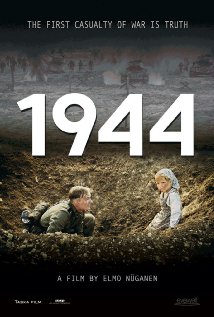
Estonian – 2015
1944 is one of the most successful Estonian films ever made, but unfortunately one of the least viewed war films outside the Baltics and former Soviet space. This is a shame because it is an incredibly moving experience for history buffs and regular audiences both.
The film has a fantastic and creative storyline that follows Estonian soldiers that either volunteered or were conscripted into both the German and Red Armies during World War II.
It begins on the Tannenburg line in Estonia with the German forces fighting to hold back the Soviet surge in the north in 1944. It then switches to the Soviet perspective after the fall of Estonia’s capital, Tallinn, and the mop up operations to eliminate all German/Estonian resistance.
Read another story from us: Guns in Movies and Television: The Best & Worst
There are many intense battle scenes from both the German and Red Army perspective that captures the futility of Estonians that fought and lived during the war with no hope for sovereign autonomy regardless of the victor.
It is one of the best films showing the plight of peoples caught between two great militaries and ideologies – and in this case, neither side was universally agreeable to the Estonian people.
